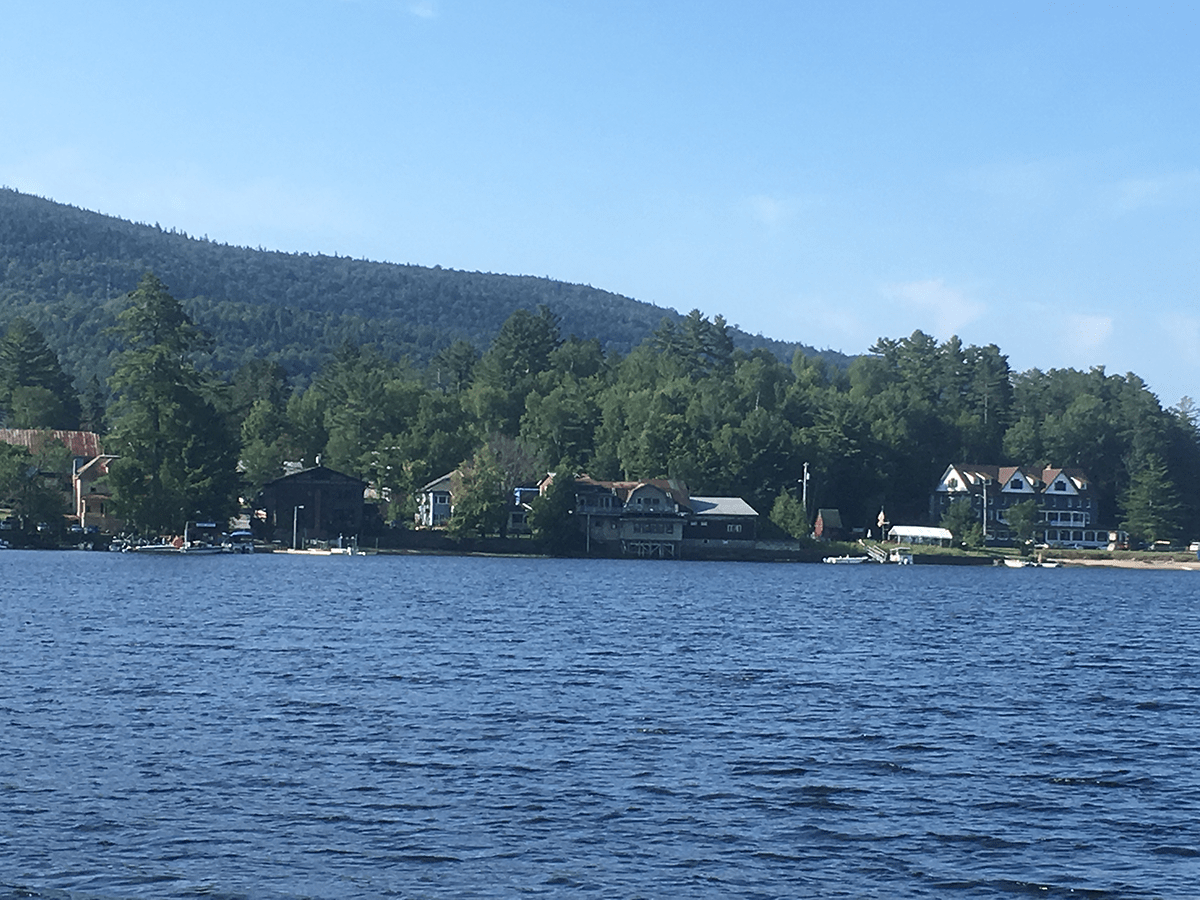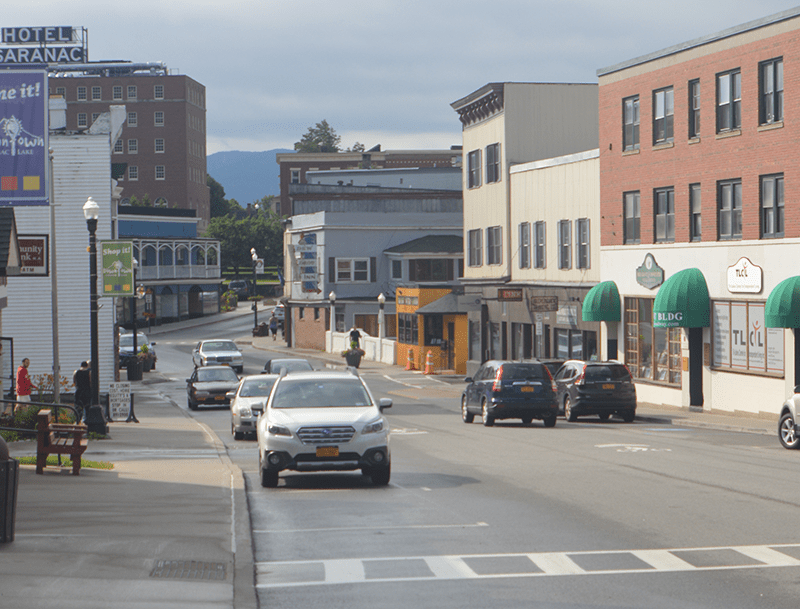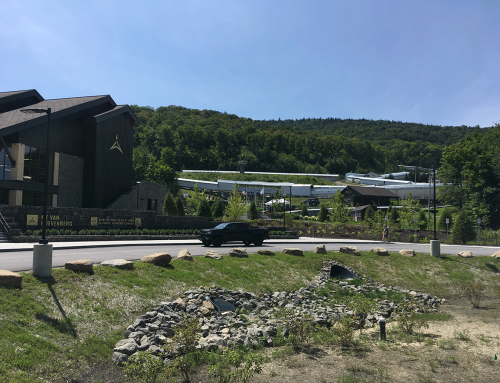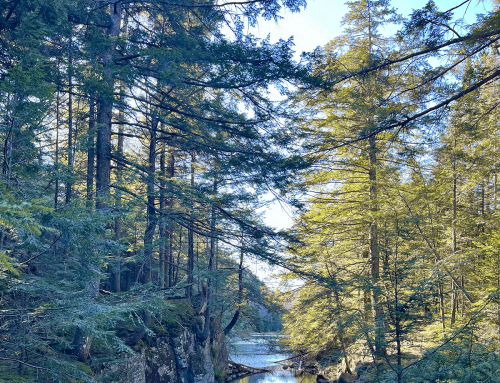Do the Top 25 fastest growing rural counties in the U.S. have any lessons for communities in the Adirondack Park and Upstate New York?
A previous article pointed out that from 2010 to 2020, 66% of the counties across “Rural America” experienced declining populations. These are counties much like those in the Adirondack Park. These counties cover 68% of the continental U.S. yet contain just 14% of the country’s population. Mild population loss in the Adirondacks is often held up as a uniquely Adirondack thing, in reality it’s widely shared throughout most of rural Upstate New York and across the majority of Rural America. Many questions arise from the 2020 US Census data. One question I’ve been asked: What can you tell us about the counties in Rural America that are growing, and do they hold any lessons for Adirondack Park communities?
Across Rural America, 662 out of 1,941 rural counties gained population, but for about a hundred of those it was growth of 1% or less. Let’s look at the top 25 rural counties in the U.S. that experienced growth from 2010 to 2020 to see if there is anything applicable to the Adirondacks and North Country?
North Dakota saw robust growth in some of its rural counties, especially in the northwest part of the state. McKenzie County (no. 1) grew by 131% and Williams County (no. 2) grew by nearly 83%, while Stark County (No. 6) grew by 39%, Montrail County (no. 8) grew by over 27%, and Billings County (no. 17) grew by 20%. These are all counties that boomed with the natural gas fracking industry. Even if fracking was allowed in New York, there are no viable deposits lurking below the Adirondacks to frack. President Joe Biden has passed impressive climate change mitigation programs, but the reality is that the U.S. has never before produced the amounts of oil and natural gas that we’re producing today. These North Dakota counties are all benefiting from the current fossil fuels production boom. The expanded work force from fracking also saw significant increases in the Diversity Index in these counties, which measures the diversity of the population, especially among children. These are the children of the new work force that arrived to work in the fracking industry or the service industries around rapidly expanding communities.
Utah saw two rural counties with impressive growth. Wasatch County (no. 3) grew by 48% and Iron County (no. 12) grew by 24%. Both counties have very high populations of religious communities historically tied to these places where a priority is placed on large extended families.
Madison County (no. 4) in Idaho grew by 41%. It’s home to part of the sprawling Brigham Young University, which for more than a decade has implemented measures to increase its student enrollment significantly, and it has successfully added thousands of college students. As a result, its 18 to 24-year-old population alone grew by over 8,000 from 2010 to 2020. It added faculty and staff to facilitate this growth, which saw gains in both its adult population and young children. Brigham Young University is also one of the most affordable colleges in the country with costs today that rival SUNY prices in the 1980s. I’ve long argued that if we doubled student enrollment at Paul Smith’s College and North Country Community College in Saranac Lake that alone would solve the young people issue in the Adirondacks.
Montana had four counties among the Top 25: Gallatin County (no. 7) grew at 33%; Carter County (no. 14) grew at 22%; Broadwater County (no. 16) grew at 20%; and Richland County (no. 23) grew at 18%. Montana is a state that has grown by over 20% in the last two decades, part of the population shifts across the West, largely driven by an exodus of Californians to other western states. This movement has fueled growth in Gallatin County and Broadwater County. Gallatin is home to the city of Bozeman, which at 56,000 people is the size of Utica. It also contains extremely rural areas, but Bozeman has seen considerable growth. Broadwater County has population areas within commuting distance of both Helena and Bozeman. Richland and Stark counties are on the North Dakota border and have benefitted from the fracking boom. Again, fracking is not a strategy for the Adirondacks, nor is attracting disillusioned Californians who are rooted to the West.
Massachusetts has two rural counties that saw impressive growth – Nantucket County (no. 5), grew by 40% and Dukes County (no. 11), which covers all of Martha’s Vineyard, grew by nearly 25%. Both exclusive islands have strong tourism economies, which has fueled massive vacation home development and both places have seen a boom of retirees in the last few decades. These islands have seen housing and land prices skyrocket, fueled by a building and real estate boom by some of the richest folks in the country. Both islands have taken steps to import a work force to support the growing building and service industry demands of the super-rich. The interesting thing to note is that the Diversity Index for both islands among their growing populations of children is upwards of 50% to 60%. Both counties have also taken to seriously taxing vacation homes and high value homes to support ambitious affordable housing programs to support the local work force. Becoming an exclusive enclave of the super-rich probably won’t work for most places in the Adirondacks.
Texas has three rural counties in the Top 25. These three all saw growth primarily fueled by oil and gas extraction. Andrews County (no. 9) grew by nearly 26%. Gaines County (no. 13) grew by 23%. Sterling County (no. 18) grew by 20%. Texas grew by 4 million people from 2010 to 2020, and by almost 10 million from 2000 to 2020. New York State has seen only a slight increase in population since 2000. Again, Adirondack communities are not in the oil and gas production business.
Mineral County (no. 15) in Colorado is fascinating. There local leaders were always non-plussed by prior US Census counts and believed that many of its citizens had been missed. It’s an extremely rural place with 865 folks in 2020 where in the past Census forms were nailed to fenceposts in hopes of reaching residents. In 2020, County leaders made a huge effort to get everybody counted and when the count was done it showed population growth of 21%, but local leaders maintained that nothing had changed, rather this was just an accurate count. I’ve always wondered about the Census counts in the Adirondacks and the difficulties of finding and counting a far-flung population, many of whom live at the ends of long driveways.
Georgia has three rural counties in the Top 25. Two rural counties on its northern border with North Carolina recorded impressive population growth. Jackson County (no. 10) grew by over 25% and Towns County (no. 20) grew 19%. These counties are within commuting distance of Atlanta, but both also saw huge growth upwards of 50% in their retiree population. Similarly, Greene County (no. 22), in central Georgia, saw its retirement age population jump by 70%, built around golf-course-over-55 community developments, while its populations of young children 0 to 4 years old and young adults 25 to 34 years old both dropped. Sunbelt retiree development is probably not a viable Adirondack strategy.
No. 19 is Platte County in Missouri, which is one of the largest rural counties by population. This county grew by over 19%, but while its northern 80% is largely agricultural areas and thinly populated, its southern zone is suburban neighborhoods nestled around Kansas City. It’s home to the Kansas City Airport. It’s a county, much like Kansas City, which is diversifying as its Diversity Index is 40% for adults and is over 50% for its children. Kansas City has a population of over 500,000 people and is an easy commute from the suburbs in southern Platte County. The Adirondack Park has no such major metropolitan area on its edges.
No. 24 is Crook County in Oregon, which grew by over 17%. Located in central Oregon and dominated by forests and open scrub prairie, with a large base of federally owned lands, Crook County may be the most similar to the Adirondacks among fast-growing rural counties. The county rose from 20,978 to 24,738 from 2010 to 2020. Its population rose at all levels, but it saw its biggest increase, by over 2,200 people, was among people over age 65. Its economy is not fueled by any one industry and like many rural areas sees high employment in the school districts and health services. There is also high employment with federal agencies around federal lands. Unusual for a rural area, it also is the site of a major Facebook data center, a facility that has expanded to 4.2 million square feet. The closest Facebook data centers to the Adirondacks are in North Carolina and Ohio. The location of Crook County in central Oregon also made it ripe for a major warehouse operation, which employs several hundred people. New York’s environmental agencies are not staffed at levels like the federal government, nor is the Adirondacks likely to see a warehouse operation due to its location. But a Facebook data center? You never know.
No. 25 is Nye County, Nevada, which is the 3rd largest county in the U.S. by geography. Nye County grew by over 17%. Its major population center is Pahrump, tightly clustered in its southern tip, which is just an hour’s drive from Las Vegas, making for a relatively easy commute. While its adult population grew at an impressive clip, its population 17 years old and younger dropped.
A confluence of factors drives population growth in rural areas. Unlike some of the fastest growing rural areas we don’t frack for natural gas in the Adirondacks, and we do not have a crude oil extraction industry. We do not have intense religious communities who are tied to a specific geography. We also are not in close proximity to a major metropolitan area like Las Vegas or Kansas City or Atlanta. We’re not a sunbelt retirement destination and we’re also unlikely to attract high tech centers or major warehouse operations.
While we may not share much with these fast-growing rural areas, it’s important to note that in the Adirondacks we are not alone, quite far from it. We are firmly ensconced in the realities of Rural America in the 2020s. We are neither separate or unique or unusual, but we are part of the massive geography spread across the continental U.S. where demographic trends that have built up over decades, and are largely beyond local control except at the margins, are reshaping thousands of small rural communities like those in Hamilton and Essex counties and many other places in the Adirondacks and North Country. We’re in the same boat as many other rural places — we cannot stop our large older population from aging and dying and we can’t force our younger population to birth more kids. Given these two realities, which are the two key factors driving Adirondack population dynamics and those across Rural America, we’re likely to continue to see slow population decline continuing for years to come.
Yet, a smaller population should not make Adirondack Park communities any less dynamic or vibrant in the future. And here, it seems, there are some lessons from the fast-growing rural communities detailed above that may be helpful for strengthening Adirondack communities.
Take a page from Madison County in Idaho and Brigham Young University and invest in the Adirondacks’ one 4-year college inside the Blue Line – Paul Smith’s College. The State of New York has made many poor long-term strategic investments (think Frontier Town Campground or ORDA’s mountain-coaster ride amusements). In some ways, the Adirondack Park philanthropic community has been all over the map as well. Doubling the enrollment at Paul Smith’s College, and making it a highly affordable college experience as well as a terrific Adirondack experience, would reap major long-term benefits for communities around the college and the Park’s over-arching population trend lines.
Take a page from the Massachusetts islands of Nantucket and Martha’s Vineyard. Sure, these places are havens of the super-rich, but these places are also attempting serious, strategic affordable housing programs to build and maintain their local work force and community viability. In the Adirondacks, we have a huge amount of vacation homes, in some places more houses than people, which has driven up local property values and costs, and these homes should be taxed in some way to fund strategic investments in the welfare and viability of local communities. Vacation homes are a big part of the problem in Nantucket and Martha’s Vineyard, but these communities are taxing them heavily to make them part of their solutions.
One key part of the population growth in many of these fast-growing rural communities is that most have also seen a rise in the diversity of their populations. Any economic expansion which needs young people in the U.S. today is going to find a more diverse population seeking those jobs. Only a handful of the fast-growing rural counties failed to see a rise in their Diversity Index for children. The great majority went up significantly. In many places diversification and economic expansion go hand-in-hand.
Take a page from Crook County and federal lands management with its high staffing levels. The Forest Preserve in New York State suffers from chronic under-investment at every level of its management. This is evident from the overall poor quality of hiking trails, scatter-shot ad hoc public education, inadequate Forest Ranger numbers, lack of long-term scientific studies, and planning for hundreds of thousands of acres of Forest Preserve that has never been completed, among so much more. The management of the Forest Preserve should be a job center in the Adirondack Park, in all areas of the Park, which would increase natural resource protection, enhance the experiences of visitors, and boost local communities.
Last, take a page from Mineral County in Colorado and augment the federal efforts to promote the 2030 US Census with local promotional efforts to make sure every resident is counted.








